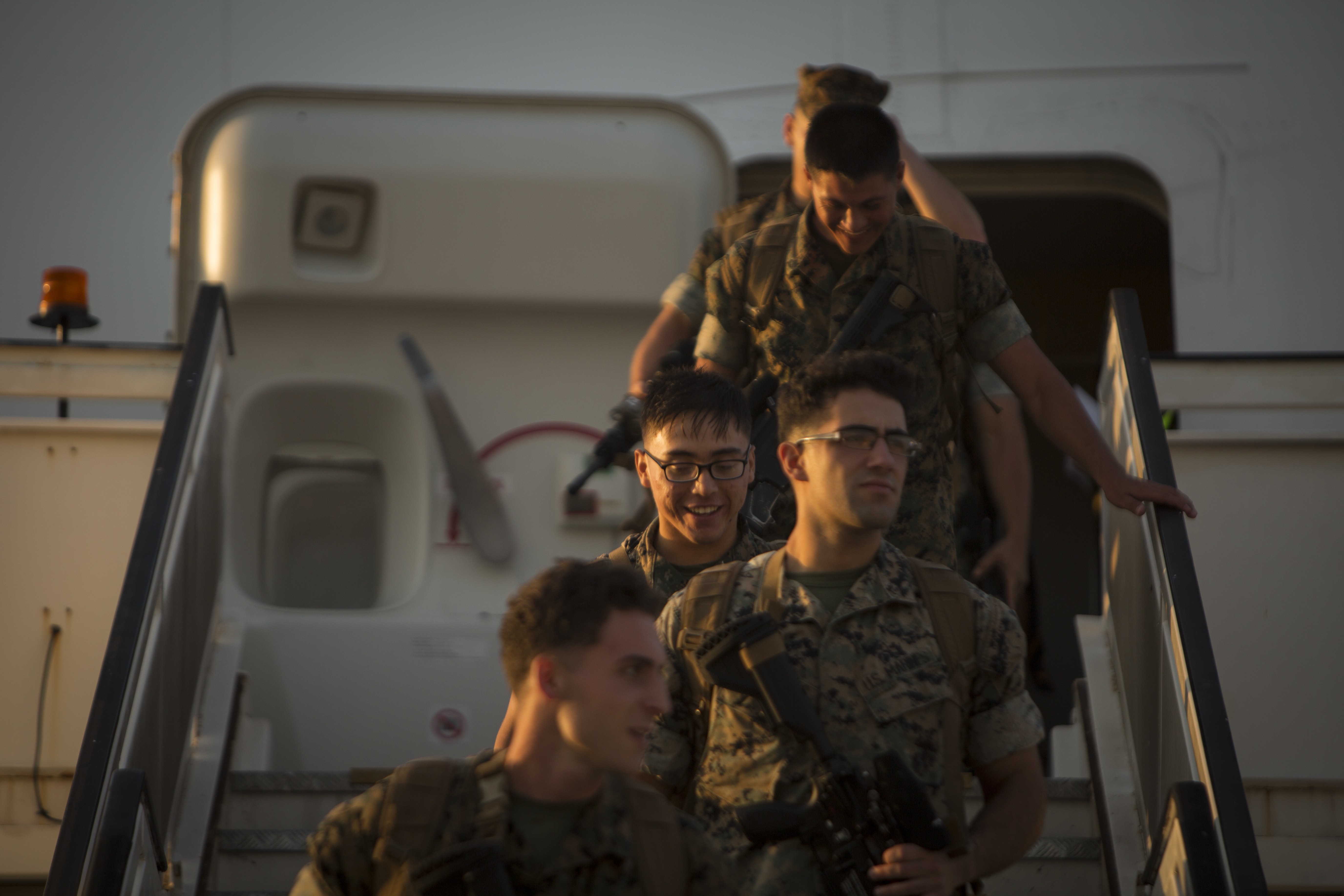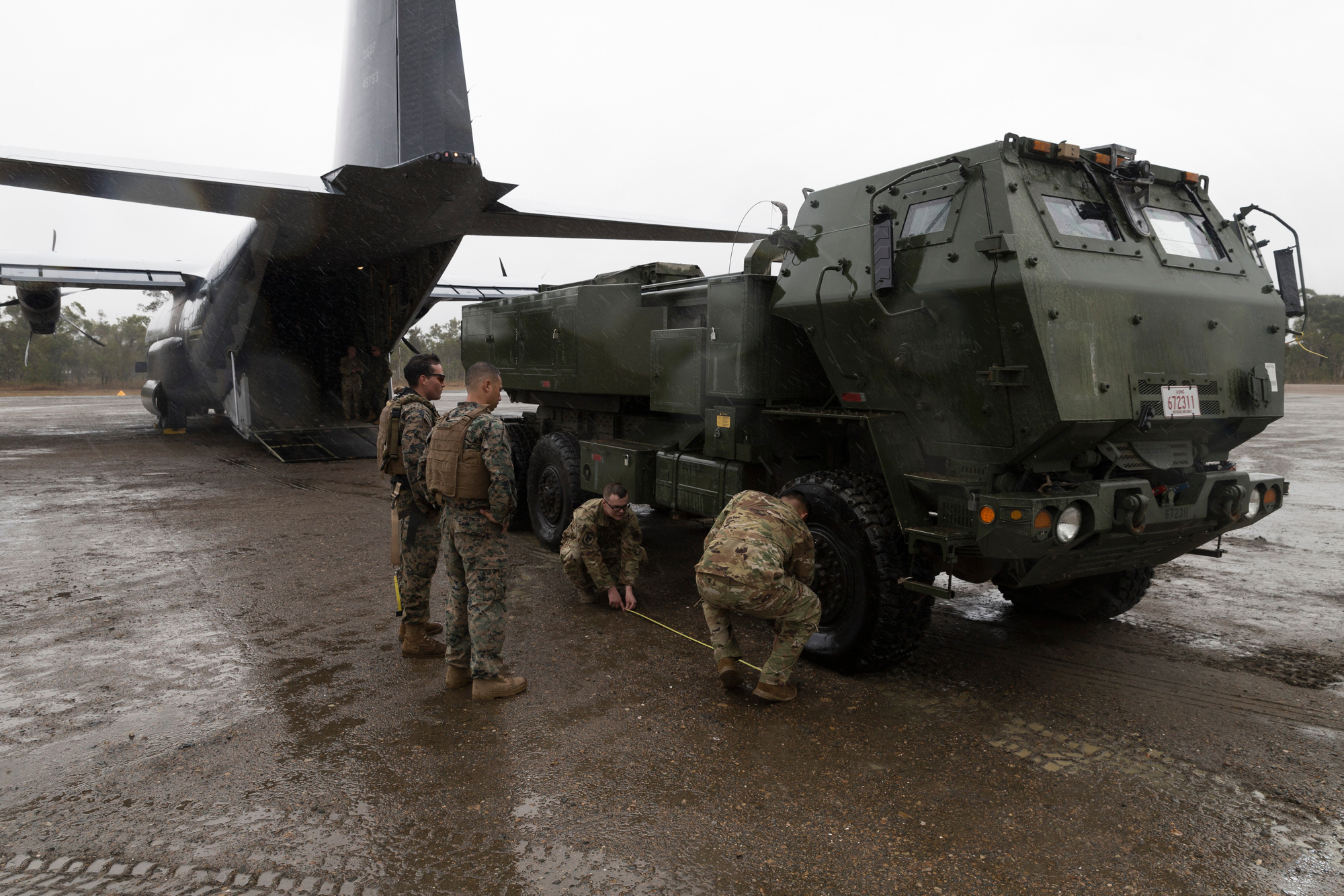
The deployment of a High Mobility Artillery Rocket System (HIMARS) platoon to Australia has helped the Marine Corps reach the 2,500-Marine presence in Darwin that U.S. and Australian leaders promised in 2011.
Eight years ago, Barack Obama and former Australian Prime Minister Julia Gillard announced that Australia would host 250 Marines beginning in 2012 at the Royal Australian Air Force base in Darwin, at the very northern tip of Australia on the Timor Sea. Within five years – by 2017 – they said the force would grow to a Marine Air-Ground Task Force (MAGTF) of 2,500.
Though the rotations of forces in and out of Darwin have grown in size, the Marines are just now reaching that 2,500 figure – though the next rotations may not be as large, the service said.
“This increase in MRF-D (Marine Rotational Force – Darwin) personnel is a tangible demonstration of the United States’ sustained commitment to the Australia-U.S. alliance and to maintaining a free and open Indo-Pacific region. It will improve security cooperation activities, disaster relief response capabilities, and the ability to respond to various crises throughout the region,” the service stated in a news release.
“While reaching 2,500 is a significant milestone, it is important to note that the size of future MRF-D rotations will be based on requirements set jointly by U.S. Marine and Australian Defence Force planners with an emphasis on capabilities rather than a target number of personnel.”
The service reached the 2,500 figure by supplementing the rotational force already in Darwin with some additional units: a HIMARS platoon with Marines from 3rd Battalion, 12th Marine Regiment in Okinawa, Japan, who will “provide MRF-D an extended range precision strike capability that can further shape the battlespace;” 3rd Battalion, 3rd Marine Regiment, an infantry unit stationed in Hawaii; a detachment of Marines from Combat Logistics Battalion 1 at Camp Pendleton, Calif.; and a Shock Trauma Platoon from 3rd Medical Battalion in Okinawa.

Those Marines will remain in Australia until October.
U.S. Marine Corps Forces Pacific spokesman Chuck Little told USNI News that the emphasis on capability rather than capacity isn’t a stark departure from previous policy, despite the original goal for a full 2,500-Marine MEU-like formation in Australia to supplement the 31st MEU in Okinawa and other forces west of the international date line.
“The 2,500-Marine threshold for MRF-D has always been a capabilities-based number, as it gives the Marine Corps a MEU-like capability, with fully-capable Ground, Logistics and Aviation Elements – but obviously without the amphibious shipping. However, the composition of each MRF-D rotation is tailored to the meet the training requirement established for that year’s rotation by U.S. and Australian planners,” he said.
Noting that the training needs change from year to year – this year a large contingent from 31st MEU is in another region of Australia for the biennial Talisman Sabre exercise – Little added that, “as our planners work with their Australian counterparts to develop these exercises, they will identify the capabilities, units and personnel that are needed to fulfill those exercise objectives.”
Since that 2011 announcement of the MRF-Darwin program, many things have changed both in Australia and for the Marine Corps.
At the time, the Marines were still tied up in ground wars in Iraq and Afghanistan but wanted to rededicate their focus to amphibious operations. When then-Commandant Gen. James Amos first discussed the Darwin rotational force, he said he didn’t want the Marines to just fly there, train for a few months and fly back; rather, he said he wanted them to be transported on amphibious ships and use Darwin as an opportunity to increase Navy-Marine Corps presence in that region of the Indo-Pacific theater.
That vision never quite came to fruition, and changes in Australia have made that all but impossible. In November 2015, the government of the Northern Territory, where Darwin is located, decided to lease the port to Chinese company Landbridge in a 99-year agreement. This instantiation of China’s Belt and Road global investment program – which Washington officials complained they weren’t warned of ahead of the sale – would dissuade the U.S. from wanting to send its ships there for port calls, husbanding or other activities.





